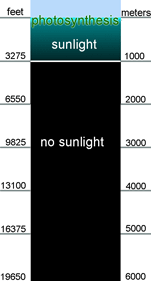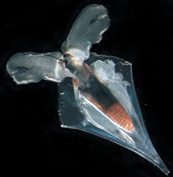Zooplankton sequenced at sea, illuminating life in the dark
 The deep oceans are the largest biotic space on earth, but remain largely unexplored. Census of Marine Life scientists recently trawled the Atlantic between the southeast US coast and the Mid-Atlantic ridge, focusing on the zone of perpetual darkness that lies below about 1000 m, to inventory and photograph the variety and abundance of zooplankton–the tiny sea animals that form a vital link in ocean food chains. The 20 day cruise completed April 20 is part of the ambitious gobal inventory of zooplankton by 2010 (Census of Marine Zooplankton (CMarZ), a Census of Marine life initiative. As reported in Science, for the first time DNA sequencing was performed on the rolling seas, telescoping into just three weeks what would normally represent years of laboratory work.
The deep oceans are the largest biotic space on earth, but remain largely unexplored. Census of Marine Life scientists recently trawled the Atlantic between the southeast US coast and the Mid-Atlantic ridge, focusing on the zone of perpetual darkness that lies below about 1000 m, to inventory and photograph the variety and abundance of zooplankton–the tiny sea animals that form a vital link in ocean food chains. The 20 day cruise completed April 20 is part of the ambitious gobal inventory of zooplankton by 2010 (Census of Marine Zooplankton (CMarZ), a Census of Marine life initiative. As reported in Science, for the first time DNA sequencing was performed on the rolling seas, telescoping into just three weeks what would normally represent years of laboratory work.
 According to Ann Bucklin, lead scientist for CMarZ and Head of the University of Connecticut Marine Sciences Department, “we are just starting to realize how little we know about species variety. We used to think we knew many species well, but the advent of DNA barcoding has radically altered that perception. Genetically distinctive species of zooplankton are being found with increasing frequency.”
According to Ann Bucklin, lead scientist for CMarZ and Head of the University of Connecticut Marine Sciences Department, “we are just starting to realize how little we know about species variety. We used to think we knew many species well, but the advent of DNA barcoding has radically altered that perception. Genetically distinctive species of zooplankton are being found with increasing frequency.”
This entry was posted on Saturday, May 13th, 2006 at 10:38 pm and is filed under General. You can follow any responses to this entry through the RSS 2.0 feed. Both comments and pings are currently closed.